


LEONARDO DA VINCI 1452 -
xxxxxIt was in 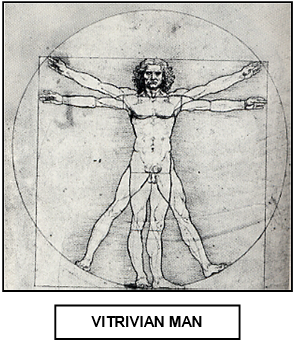 or around the year 1497 that the undisputed genius of the Italian Renaissance, Leonardo da Vinci, painted his famous mural The Last Supper in the refectory of the church of Saint Maria delle Grazie in Milan. His other masterpiece was his Mona Lisa, completed about 1506 and now in the Louvre, Paris. A brilliant painter, sculptor, architect, scientist and engineer, he worked for the most part in Florence and Milan. Apart from his rare talent in the visual arts, his brilliant, enquiring mind, born of a love of knowledge, made advances in fields of study as far apart as anatomy, geology, botany, hydraulics and aerodynamics. His inventions included drilling devices, cranes, water pumps and a central heating system, and, as a military engineer, he produced pontoons, cannons and assault machines.
or around the year 1497 that the undisputed genius of the Italian Renaissance, Leonardo da Vinci, painted his famous mural The Last Supper in the refectory of the church of Saint Maria delle Grazie in Milan. His other masterpiece was his Mona Lisa, completed about 1506 and now in the Louvre, Paris. A brilliant painter, sculptor, architect, scientist and engineer, he worked for the most part in Florence and Milan. Apart from his rare talent in the visual arts, his brilliant, enquiring mind, born of a love of knowledge, made advances in fields of study as far apart as anatomy, geology, botany, hydraulics and aerodynamics. His inventions included drilling devices, cranes, water pumps and a central heating system, and, as a military engineer, he produced pontoons, cannons and assault machines.
xxxxxHe was born 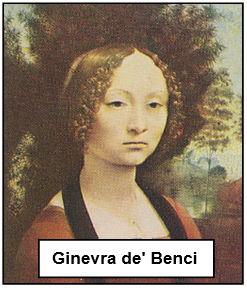 in the small town of Vinci near Florence, the son of a wealthy lawyer. His mother was unmarried so he was brought up in his father’s home. Placed as a boy apprentice (a garzone) in the workshop of the artist Andrea del Verrocchio, it was here that he met Sandro Botticelli and his fellow pupil Pietro Perugino. It was in this studio that he painted altarpieces and showed his skill as a sculptor in marble and bronze. We are told that when he assisted his teacher in the painting of his Baptism of Christ -
in the small town of Vinci near Florence, the son of a wealthy lawyer. His mother was unmarried so he was brought up in his father’s home. Placed as a boy apprentice (a garzone) in the workshop of the artist Andrea del Verrocchio, it was here that he met Sandro Botticelli and his fellow pupil Pietro Perugino. It was in this studio that he painted altarpieces and showed his skill as a sculptor in marble and bronze. We are told that when he assisted his teacher in the painting of his Baptism of Christ -
xxxxxIn 1477 his career took off when he came under the patronage of Lorenzo the Magnificent, the outstanding member of the Medici family. Over the next five years he pursued his interest in a variety of subjects, his restless mind wrestling with problems related to astronomy, geology, engineering and anatomy. In his painting at this time his works included the portrait Ginevra de’ Benci, about 1478, and his first large painting Adoration of the Magi, begun in 1481 but, like so many of his works and projects, left unfinished.
xxxxxThen in 1482, on the strength of a letter he sent to Lodovico Sforza in Milan in which he modestly claimed that he had the technical skill to build a variety of war machines -
xxxxxLeonardo da Vinci, the undisputed genius of the Italian Renaissance, painted his famous The Last Supper for a church in Milan in 1497. His other masterpiece the Mona Lisa was completed in 1506 and is now in the Louvre in Paris. Apart from his great skill in the visual arts, his brilliant, enquiring mind made advances in science, engineering, anatomy, geology and botany. His inventions included cranes, drills and pumps, and as a military engineer he produced pontoons, cannons and assault machines. He was a pupil in the workshop of Andrea del Verrocchio, and it was there that he met Botticelli and Perugino. In 1477 his career took off when he came under the patronage of Lorenzo the Magnificent. Five years later he worked as a military engineer for Lodovico Sforza in Milan. To this period belongs his Virgin of the Rocks, the colossal bronze equestrian monument to Francesco Sforza, and The Last Supper. After a short stay in Venice, where he probably met Giorgione, and a visit to Rome -
Including:
Giorgione

xxxxxIt was during this long stay in Milan, some 17 years, that he produced his masterpiece, The Last Supper, completed in 1497. Perhaps a better title would have been Word of Betrayal, because this scene captures the moment just after Christ has said that one of his disciples would betray him. The unique composition says it all. Christ sits at the centre, isolated, serene and resigned, whilst in dramatic contrast, his disciples, grouped in threes, recoil and gesticulate in stunned disbelief or agitated denial. Unfortunately, to paint this scene, Leonardo used oil on dry plaster and within a few years deterioration had set in. Over the years, many attempts have been made to restore the work, the most recent one of 1977 going some way to make good the damage.
xxxxxIn 1502, after a short stay in Venice -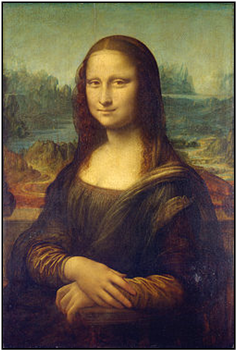 ne on it. It was at this stage that Sanzio Raphael, aged 19, must have seen both the masters at work.
ne on it. It was at this stage that Sanzio Raphael, aged 19, must have seen both the masters at work.
xxxxxIt was in 1506 that he completed one of the paintings for which he is best known, the beautiful Mona Lisa, thought to be the wife of Francesco Zanobi del Giocondo. Famed for her enigmatic smile, it is said that he himself had a fascination for this work and took it with him on all his travels. Whilst The Last Supper is remarkable for its composition, the Mona Lisa is noted for its development of chiaroscuro (the subtle, balanced use of light and shade), and for his own technique known as sfumato (a gradual softening of colour and tone). These techniques -
xxxxxIn 1507 he went to Milan in the service of the French king, Louis XII, but he continued to spend some time in Florence. Then in 1513 he started a three year stay in Rome where the Italian architect Donato Bramante, Michelangelo and Raphael were all busy working for the pope. Commissions were few and far between, however, and so in 1516, with the grand title of “painter, architect and mechanic to the King” he went to serve the young French monarch Francis I, a man who greatly admired his work. His last years were spent at the chateau de Cloux, near Amboise on the Loire, not far from the king’s summer palace. There he produced his last painting, his Saint John the Baptist, probably completed about 1515 and now in the Louvre, Paris,
xxxxxApart from his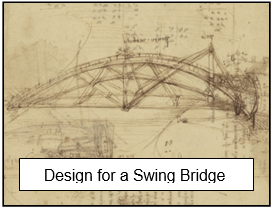 paintings -
paintings -
xxxxxOther 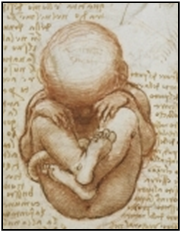 notebooks contained superb
notebooks contained superb 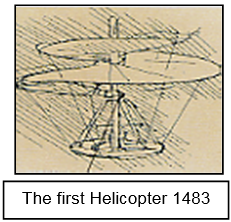 artistic drawings, some 600 of which are housed in the royal library at Windsor Castle. His brilliant drawings of humans, animals and plants testify to his remarkable powers of observation, whilst his anatomical illustrations were accurately based on his own experience at the dissecting table (as seen in this drawing of a foetus). He also made sketches illustrating various types of what are today known as “contact lenses”. Prime examples of his draughtsmanship are his cartoon for the Battle of Anghiari -
artistic drawings, some 600 of which are housed in the royal library at Windsor Castle. His brilliant drawings of humans, animals and plants testify to his remarkable powers of observation, whilst his anatomical illustrations were accurately based on his own experience at the dissecting table (as seen in this drawing of a foetus). He also made sketches illustrating various types of what are today known as “contact lenses”. Prime examples of his draughtsmanship are his cartoon for the Battle of Anghiari -
xxxxxA man of remarkable skill and creativity, Leonardo astonishes one by his unquenchable thirst for knowledge and the enormity of his achievement in so many fields of human endeavour. In his artistic work his influence was immense, and in the realm of science his close observation and precise measurement of the natural world -
xxxxxIncidentally, Leonardo da Vinci died in Cloux and was buried in the palace church of Saint-
xxxxx…… In 2011 a painting 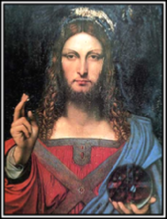 previously thought to be the work of one of Leonardo’s pupils -
previously thought to be the work of one of Leonardo’s pupils -

xxxxxA contemporary painter and a great admirer of Leonardo da Vinci was Giogione. He and Titian were pupils of Giovanni Bellini and they worked together in Venice. He made important advances in the development of oil painting, creating a dream-
xxxxxA contemporary painter who much admired the work of Leonardo da Vinci and might well have met him when he visited Venice in 1500, was Giorgio Barbarelli (c1475-
xxxxxGiorgione’s artistic 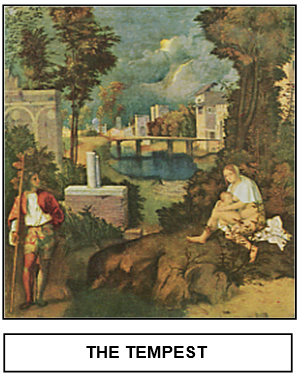 career was a short one, but he was an important innovator. For a start, he made substantial advances in the development of oil painting, resulting not only in an enhanced richness and warmth of colouring, but also in the creation of a hazy, soft light, the likely influence of Leonardo and clearly to be seen in The Tempest, completed in 1505. Rather than defining figures or the object of a theme, this served to create an all pervading dreamlike mood for the painting as a whole. He also broke new ground in other respects. Unlike earlier artists, his poetic landscape was not used as a mere backcloth, depicting some classical or religious theme, but was an essential, if not the essential part of the painting. Likewise, in his depiction of the female nude in his Sleeping Venus, the reclining figure is the subject of the work, not simply one of many in some busy mythological scene. This was an innovation which many artists -
career was a short one, but he was an important innovator. For a start, he made substantial advances in the development of oil painting, resulting not only in an enhanced richness and warmth of colouring, but also in the creation of a hazy, soft light, the likely influence of Leonardo and clearly to be seen in The Tempest, completed in 1505. Rather than defining figures or the object of a theme, this served to create an all pervading dreamlike mood for the painting as a whole. He also broke new ground in other respects. Unlike earlier artists, his poetic landscape was not used as a mere backcloth, depicting some classical or religious theme, but was an essential, if not the essential part of the painting. Likewise, in his depiction of the female nude in his Sleeping Venus, the reclining figure is the subject of the work, not simply one of many in some busy mythological scene. This was an innovation which many artists -
xxxxxApart from his Sleeping Venus (illustrated below) and The Tempest, only three other works can be assigned to him with confidence: his altarpiece for the cathedral at Castelfranco, the Portrait of a Lady, and The Three Philosophers depicting youth, maturity and old age (illustrated below). It is also known that he decorated the facades of a number of palaces in Venice. A handful of other works might be by his brush, but the evidence is only indirect and is much disputed by some critics. Indeed, some might be the work of the young Titian.
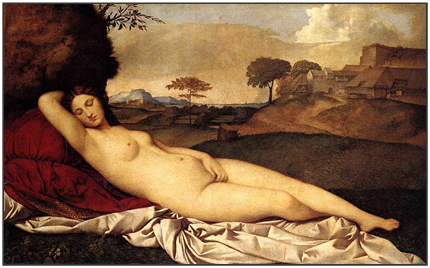
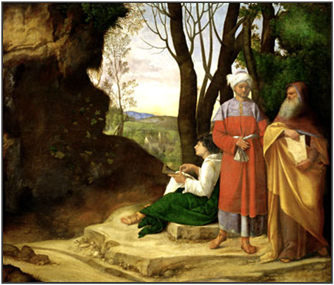



Acknowledgements
Leonardo da Vinci: Proportions of the Human Figure (Vitruvian Man) – Galleria dell’Accademia, Venice; Ginevra de’Benci – National Gallelry of Art, Washington; Last Supper – Refectory, Santa Maria delle Grazie, Milan; Mona Lisa – The Louvre, Paris; Design for Swing Bridge – Biblioteca Ambrosiana, Milan; View of a Foetus in the Womb – Royal Collection, UK; Design for helicopter – Bibliothèque de l’Institute de France, Paris; Saviour of the World – private collection. Giorgione: The Tempest -
H7-